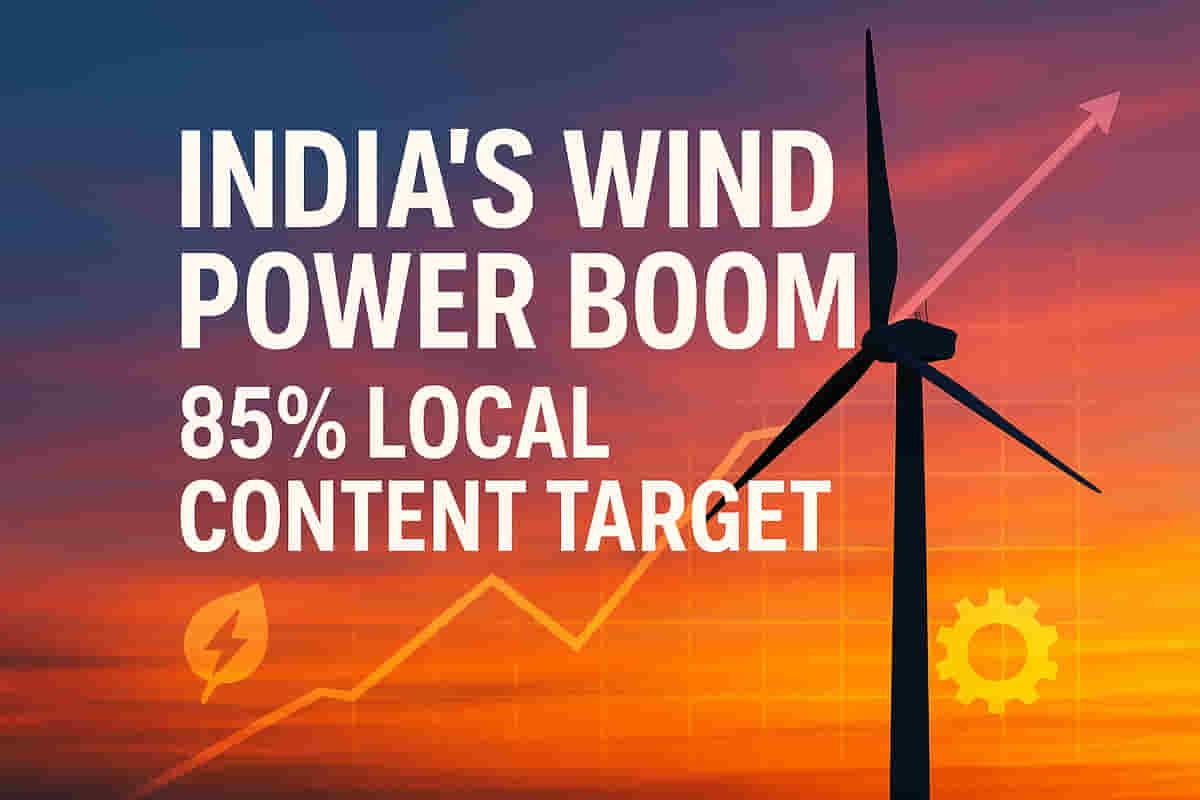India Pushes for 85% Local Content in Wind Energy to Boost Self-Reliance
Renewables
|
30th October 2025, 3:07 PM

▶
Short Description :
Detailed Coverage :
Minister Pralhad Joshi has urged the wind energy sector in India, encompassing Original Equipment Manufacturers (OEMs) and component suppliers, to significantly boost the use of locally sourced materials. The target is to raise the domestic content level from the current 64% to 85% in wind projects. This initiative is a crucial step towards enhancing India's self-reliance and fortifying its clean energy supply chain, especially given the evolving global landscape and geopolitical uncertainties.
The Minister highlighted wind energy's pivotal role in driving indigenization, noting its inherent high local content. He projected that India has the potential to capture 10% of the global wind supply chain by 2030 and expand this to 20% by 2040. Wind energy currently contributes a substantial portion, nearly one-fifth, to India's total installed renewable capacity of 257 GW. India is already among the top five nations globally that manufacture most wind components domestically, with approximately 54 GW of installed wind capacity.
Further support for domestic manufacturing is expected from the upcoming Approved List of Model Manufacturers (ALMM) for wind, which is anticipated to drive the development of the next 46 GW of capacity primarily through local production. This financial year alone, India is projected to install over 6 GW of wind capacity annually. On a broader scale, India's total installed electricity capacity has surpassed 500 GW, with more than half originating from non-fossil fuel sources. The Chairman of the Indian Wind Turbine Manufacturers Association (IWTMA), Girish Tanti, echoed this sentiment, stating India's readiness to serve 10% of the global wind supply chain by 2030, supported by over 2,500 MSMEs and robust domestic capabilities in manufacturing key components like nacelles, blades, and towers.
Impact This directive is poised to significantly benefit domestic manufacturers of wind turbine components. By mandating a higher local content percentage, it will likely stimulate increased investment in Indian manufacturing facilities, drive production volumes, and foster job creation within the renewable energy sector. Companies involved in producing nacelles, blades, towers, and other related components are expected to see substantial growth opportunities. Impact Rating: 8/10
Difficult Terms: * OEMs: Original Equipment Manufacturers. These are companies that produce equipment and then sell it to be branded by another company. * Indigenization: The process of making something indigenous; in this context, it refers to increasing domestic production and reducing reliance on imports. * GW: Gigawatt. A unit of electrical power, equal to one billion watts. It is commonly used to measure the capacity of power plants and electricity grids. * ALMM (Wind): Approved List of Model Manufacturers (Wind). This is likely a list maintained by the government or a regulatory body, specifying approved manufacturers for wind turbines or components, ensuring they meet certain quality and manufacturing standards. * MSMEs: Micro, Small, and Medium Enterprises. These are small to medium-sized businesses, often vital for employment and local economies. * Nacelles: The main housing unit of a wind turbine, located at the top of the tower, containing the gearbox, generator, and other crucial mechanical and electrical components.